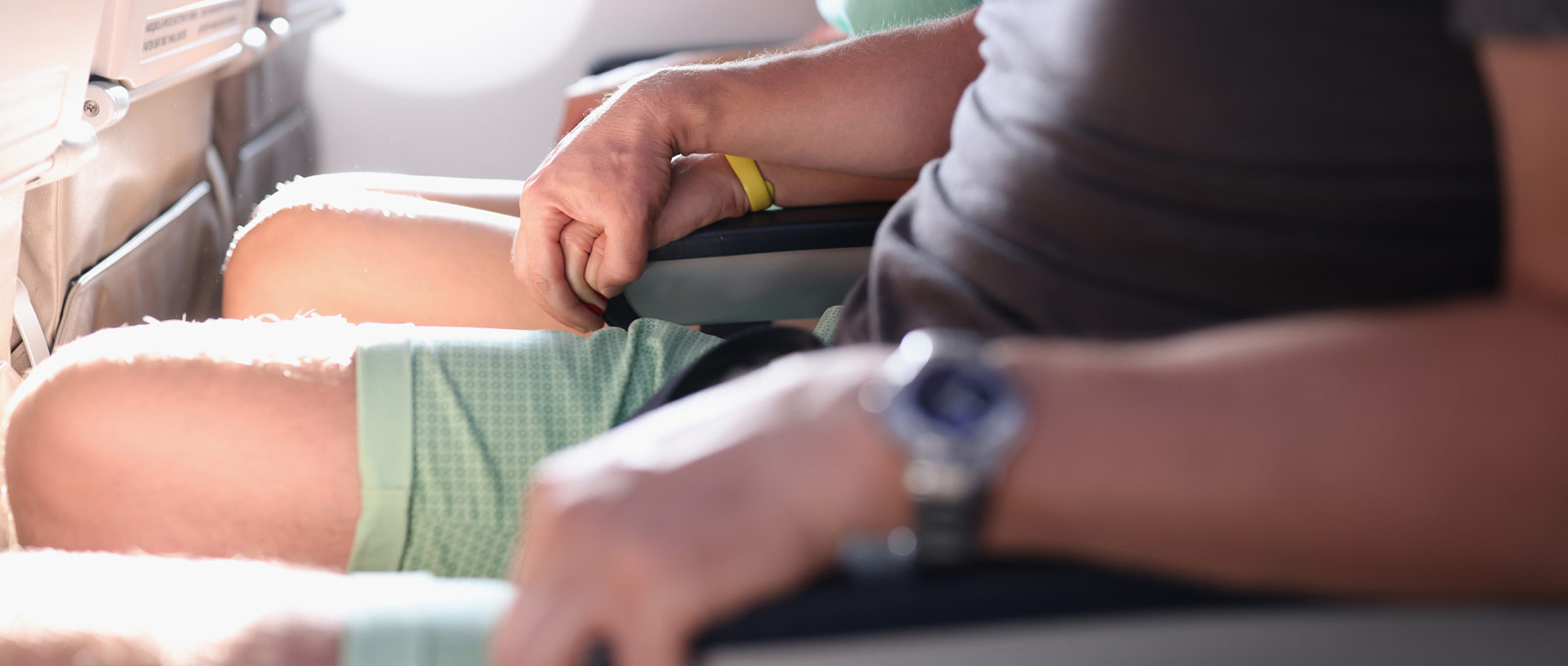This is for all having trouble with aerophobia out there! When you know how to overcome fear of flying, things will get smoother. Arranging international vacation plans, visiting different cultures with family, and enjoying to glide through the blue sky can be among the joys of life for you as well. Once you read this blog post and have an idea about how to get over fear of flying, you’ll feel free of this limiting belief. Let’s dive deeper!
Aeorphobia: What Is It?
Flying can be a nightmare for some people due to many past experiences. When we look closer to the meaning of aerophobia, it is defined as the extreme fear of being on a flying vehicle like an aeroplane or helicopter. The other terms used for the fear are flying phobia, flying anxiety, flight phobia, aviophobia, and pteromerhanophobia. Fear of flying, is a specific phobia characterized by an intense and persistent fear of air travel. While occasional nervousness or anxiety about flying is common, aerophobia is a more severe condition that can significantly impact a person’s ability to travel and experience new opportunities. This phobia may stem from various factors, such as fear of heights, fear of confined spaces, or concerns about potential accidents. In some cases, it is linked to other anxiety disorders or past traumatic experiences related to flying. Individuals with aerophobia often experience physical symptoms like sweating, trembling, rapid heartbeat, or nausea when thinking about flying or boarding an aircraft. Fortunately, it is possible to learn how to avoid fear of flying. Reading further, you’ll know more about it.
What Causes Fear of Flying?
The answer to the question what causes fear of flying, may be linked to various situations and conditions. For some individuals, it may be linked to a fear of heights (acrophobia) or enclosed spaces (claustrophobia). Others may develop this phobia due to a lack of control, where the inability to influence the situation heightens their anxiety. Additionally, fear of flying can stem from traumatic experiences, such as turbulence during a flight, or from hearing about aviation accidents in the media.
Other common causes include general anxiety disorders, fear of unfamiliar sensations during flights, or a heightened perception of risk despite the statistical safety of air travel. In some cases, fear of flying is influenced by secondary fears, such as fear of terrorism, fear of falling ill on a flight, or even fear of separation from loved ones.

How to Manage Fear of Flying
When it comes to know how to manage fear of flying, a combination of psychological techniques and practical strategies can be of use. Here are some effective approaches!
- Understanding the safety protocols and engineering of airplanes can provide reassurance. Knowing that flying is one of the safest modes of transportation may help reduce irrational fears.
- Deep breathing, meditation, or progressive muscle relaxation can help calm the mind and body before and during flights.
- Exposure therapy, where you slowly familiarize yourself with the idea of flying, can help desensitize the fear over time.
- Cognitive-behavioral therapy (CBT) and other therapeutic methods are proven to be effective for overcoming specific phobias.
- Engaging in activities like reading, watching movies, or listening to music during the flight can divert attention away from anxious thoughts.
- For severe cases, a doctor may prescribe anti-anxiety medications to manage symptoms during air travel.
With the right approach and support, it is possible to overcome the fear of flying and enjoy the freedom that air travel offers.
How Do You Get Over Fear of Flying with Meditation?
Overcoming the fear of flying, or aerophobia, can involve addressing deeper emotional triggers and adopting meditative practices that foster relaxation and mental clarity. Many individuals experience this fear as a result of past traumas or ingrained anxieties, making it essential to approach the issue with both compassion and effective techniques.
Meditative practices can play a significant role in managing and ultimately overcoming aerophobia. Here are some steps to consider!
- Identify the Trigger: Reflect on what specifically triggers your fear. It might be turbulence, the confined space of an airplane, or a lack of control. Understanding the root cause is the first step to addressing it.
- Practice Mindfulness: Mindfulness meditation helps you focus on the present moment, reducing worries about hypothetical scenarios. Concentrating on your breath and bodily sensations can ground you during a flight.
- Use Visualization Techniques: Before a flight, visualize a smooth and pleasant journey. Imagine yourself feeling calm, boarding the plane, and enjoying the trip. Positive imagery can help reshape your perception of flying.
- Incorporate Progressive Relaxation: Systematically relax your body by focusing on one muscle group at a time. This technique can reduce physical tension that often accompanies anxiety.
- Engage in Guided Meditation: Use meditation apps or audio tracks specifically designed for overcoming the fear of flying. These resources can guide you through calming exercises tailored to air travel.
- Seek Professional Help: Therapists trained in trauma or anxiety management can help you explore and resolve past experiences that contribute to your fear.
By integrating these meditative and reflective techniques into your routine, you can gradually build resilience and transform your relationship with flying into a more positive experience.
You might also want to take a look at our blog post “10 Fascinating Facts About Airplanes“.















